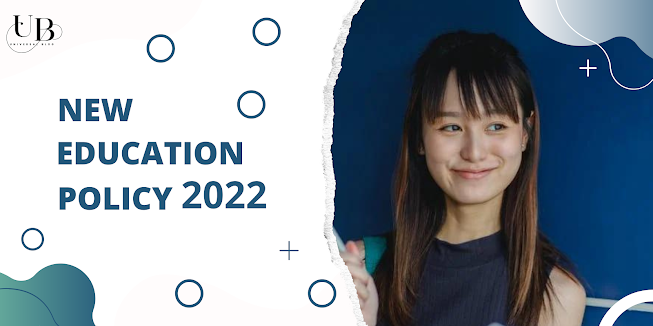 |
| New Education Policy 2022 |
The human resource management minister has introduced a New Education Policy. Chief Doctor K Kasturirangan of ISRO supervised this change to improve education.
This article aims to provide you with all the important information about the new national education policy of 2022, including the objectives, changes, characteristics, and all the other aspects.
Before launching the new National Education Policy, only nationalized India's education system. Because of this education policy, the learners of India cannot use their skills internationally. As a result, India's government has revised its old policy into the National Education Policy.
This policy mainly aims to bring the new Indian Education system to a global level. Through education policy, this scheme aims to universalize education. Great improvements have been made to the previous policy.
Children will benefit from the new national education policy scheme by getting a better education.
Launching a new education policy is aimed at enhancing India's education system.
WHAT IS NATIONAL EDUCATION POLICY 2022?
India's new education policy is removing the old one from 1986. As a part of the new national education policy, vocational and primary education in urban and rural areas are given the highest priority. Introducing the new education policy aims to improve the education system for 2021. All Indian students will obtain a top-notch education by establishing a new national education policy.
We will focus on regional languages and the mother tongues chosen by all the states.
To be a fortunate teacher, one must have a four-year bachelor's degree.
Rather than 10+2, it will be a 5+3+3+4 structure that will include the middle, preparatory, secondary, and foundational stages.
WHAT ARE THE MAJOR REFORMS IN THE NEW EDUCATION POLICY 2022?
3, 5, and 8 students have to take a school exam managed by a suitable sovereignty.
The 10th and 12th-grade board exams will continue as usual. Moreover, they will redesign them to promote holistic development.
From sixth grade onwards, students will be able to code research-based temper with mathematical thinking with the new education policy.
Vocational education will begin in the 6th grade and will include some internships.
In the latest Indian education policy, the 10+2 system will be replaced by 5+3+3+4.
With the new policy, students will spend 3 years in Anganwadi/pre-school and 12 years in school.
This policy will empathize with the mother tongue/local language/regional language for the first five grades.
It will not propel students to study any other language.
Students can choose any subject in their higher education.
PARAKH will be established as a new national assessment platform.
School and higher education students can take Sanskrit to all levels, which will also necessarily include three language methods.
There will also be the choice of studying literature from India and other classical languages.
Exit and entry points for higher education will be numerous and accompanied by appropriate certificates in the new policy.
Students can complete their UG programs in three to four years, with various exit options and certifications. For example, you may get a certificate after one year, a diploma after 2 years, a degree after completing 3 years, and finally, after completing 4 years, you will get your bachelor's degree.
The Academic Bank of Credit (ABC) will earn academic credits through different HEIs that will be stored digitally and redirected to the final degree.
Curricula for all the subjects have been streamlined to their core requirements.
To achieve this, they emphasize critical thinking, inquiry, discovery, teaching, and discussion that utilizes analysis and some holistic learning techniques.
Regulations are presumed to be light but tight in their higher education.
Focus on your e-learning to reduce textbook dependence.
With the new education policy, education will receive 6% of the GDP, up from 1.7% previously. It may have a positive effect on education.
By 2040, they focused on all HEIs to be multidisciplinary and for each to have at least 3000 students.
All the colleges combined will be progressively transitioned away over the following 15 years.
By 2030, every district should have a big multidisciplinary HEI.
Ensure 100% literacy for youth and adults by 2030.
For admission to HEIs, the NTA will offer a common entrance test.
VISIONS OF NEW EDUCATION POLICY
The New Education Policy 2022 aims for an India-centric education system that will contribute to India enduring an equitable, vibrant, and knowledge-based society by providing a world-class education.
It will strengthen our country's research and education facilities. Because of this, NEP and students who have spent a lot of dollars studying abroad will be provided with the world standard in India.

Comments
Post a Comment